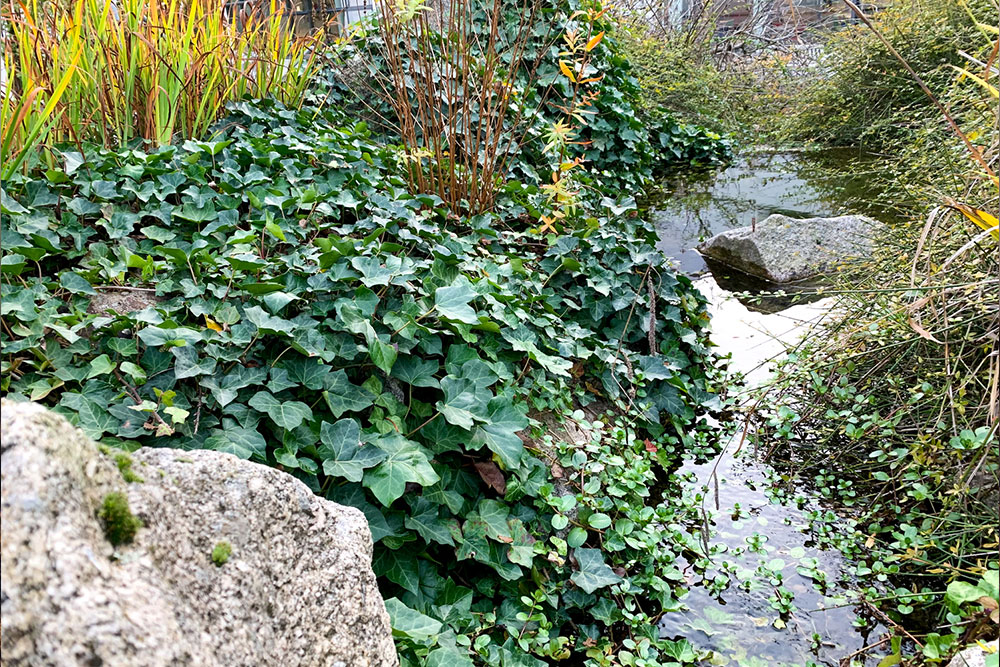Top Ways to Get Rid of Ivy Plants
Ivy is an invasive plant species that can grow densely, covering large areas. English ivy has evergreen vines that can quickly form a dense mat, suppressing native plants. Once it establishes its roots, this seriously smothering invasive plant needs only very little water or light for growth. To save their property from damage, one should know how to permanently remove ivy plants from their garden, yard, or on the walls of buildings.

Why is ivy harmful?
A single ivy plant can spread rapidly within a few months, forming large, thick patches. If left unmanaged, the invasive plant climbs up shrubs and trees and engulfs their branches, eventually killing them.
Why is it necessary to remove or kill ivy?
Here is why one needs to get rid of ivy plants:
- Ivy crowds out native plant species.
- It kills shrubs and trees.
- It invades forests, preventing forest re-growth.
- Ivy growth can restrict natural waterways.
- Ivy mats are natural nests of harmful rodents.
How can one get rid of ivy plants?
For those wondering how to get rid of English ivy, here are a few easy and effective ways to achieve the desired results:
- Cutting the vines
When the ivy leaves turn yellow, spot the vines at the base of the wall, where they emerge from the ground. Then, carefully peel small vine sections off the wall without damaging the siding. Cut the vines with pruners if they are too resistant to peeling off. However, cutting the vine alone is not enough, as parts of the original plant remain in the ground, making it possible to grow into new plants within a few months.
- Cutting the base
If the ivy infestation is old and mature, cutting the vines from the ground is necessary to prevent the growth. This is a difficult but necessary step. To remove the spreading layer of ivy mats, cut the vines growing on the ground using hand clippers, loppers, or any power equipment like a sharp brush cutter.
- Digging out the roots
Digging out the ivy roots along the base of the wall is another good way to get rid of these plants. First, water the area to soften the soil before digging to make it easier. This way, one won’t miss any deep roots and can remove any new shoots.
- Mowing
Mowing is a good alternative to digging out the ivy crowns, especially in a flat area. Ivy vines can grow very quickly and form a thick mat, so it’s crucial to mow the area regularly, if possible weekly, for the effort to be effective.
- Covering it with plastic
An alternative to digging out the ivy crowns is to cover the ivy vines with an opaque sheet or tarp of thick plastic. Ensure that no light can pass through the covering. This prevents the ivy from photosynthesizing and growing further. In this way, the ivy vines will die after one full year of covering.
- Using a herbicide
Using herbicides is the most effective and easiest way to get rid of English ivy, especially if the plant has spread over a large area or is many years old. Good herbicides like glyphosate can effectively kill the leaves and stems of the ivy without much effort. However, herbicides can’t damage the roots so that the ivy can grow back.
- Spraying vinegar
Spraying vinegar is a good way to kill ivy plants growing heavily on buildings, fences, or across the ground. White vinegar is a safe and non-toxic substance for killing ivy. The natural spray can be more effective, as the salts can dehydrate the leaves, killing the tops of the vines. However, salt can’t damage the ivy roots, so they can grow back during the growing season.
- Applying mulch
Applying mulch is effective in suppressing the growth of ivy plants. Use grass clippings, wood chips, or hay and make a layer several inches thick to smother the plants.
How to permanently kill English ivy?
Many ivy plant removal methods only temporarily check the plants’ growth. If the ivy roots remain deep inside the ground, the plants will grow back eventually. If one Googles “How do I permanently kill English Ivy?” one will find some labor-intensive solutions that effectively eliminate these invasive plants for good. One such efficient method is proper herbicide treatment.
The waxy substance of the ivy leaves prevents herbicides from penetrating deep into the plant. One must lacerate or cut the plant’s stems before applying herbicide to get through the barrier. Use a weed whacker or similar device to damage the stems first, then apply the herbicide. This will help the chemical penetrate deeper into the plants through the wounds of the already-cut stems. Applying herbicide after manually digging and pulling up ivy plants also effectively kills the root pieces left in the ground. This will prevent regrowth.